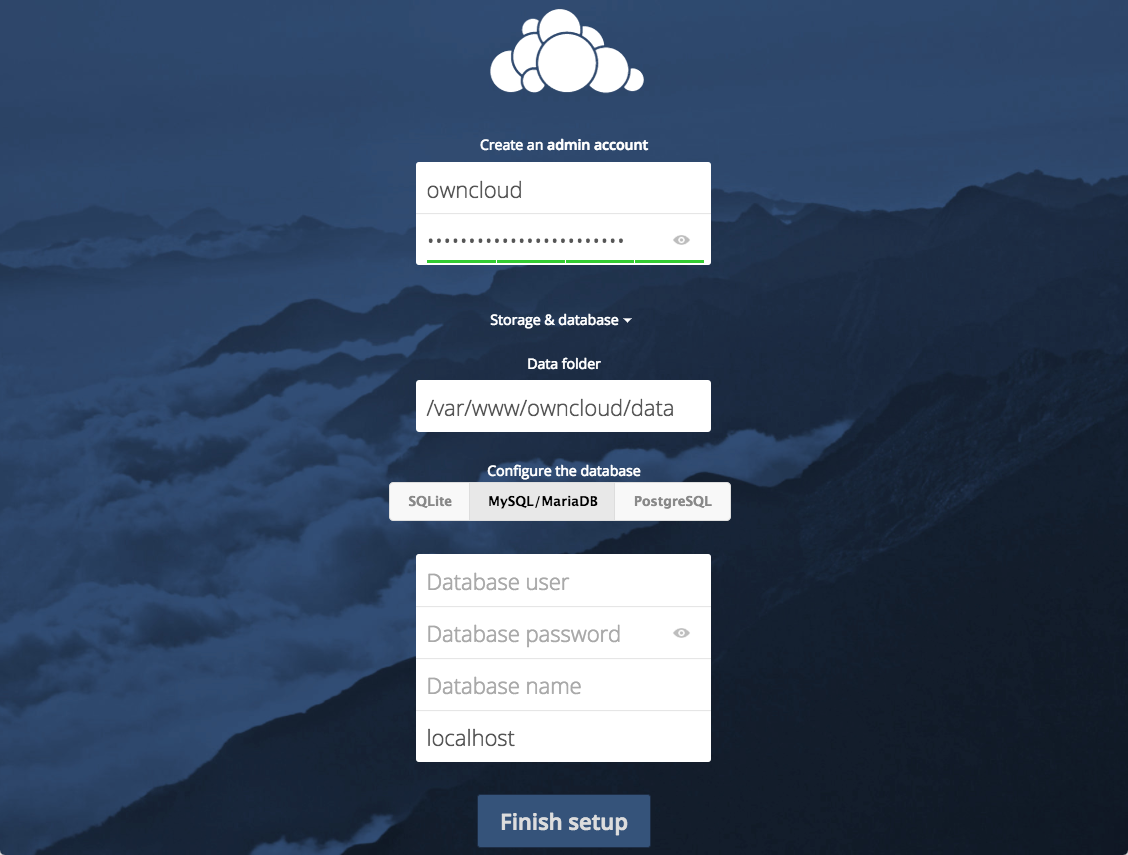

- DIGITALOCEAN OWNCLOUD INSTALL
- DIGITALOCEAN OWNCLOUD FULL
- DIGITALOCEAN OWNCLOUD FOR ANDROID
- DIGITALOCEAN OWNCLOUD SOFTWARE
The commands in this section are issued from within the MariaDB console.Īccess the MariaDB console: sudo mysql -u root -pĬreate your ownCloud database: CREATE DATABASE ownclouddb Ĭreate a new user with the necessary privileges, including a strong and unique password. Now that you have installed the prerequisites, it’s time to create the ownCloud database and user. Restart Apache to enable any changes: sudo systemctl restart apache2
DIGITALOCEAN OWNCLOUD INSTALL
Install PHP and all the required PHP packages sudo apt-get install php php-opcache php-gd php-curl php-mysqlnd php-intl php-json php-ldap php-mbstring php-mysqlnd php-xml php-zip -y You can read more about the script in the MariaDB Knowledge Base. It is recommended that you answer yes to these options.

You will be given the choice to change the MariaDB root password, remove anonymous user accounts, disable root logins outside of localhost, and remove test databases. Set a MySQL admin password and secure the installation: sudo mysql_secure_installation Start and enable the MySQL database: sudo systemctl start mysql When the installation is complete, enable and start Apache: sudo systemctl start apache2 Install the LAMP stack with a single command: sudo apt-get install lamp-server^ -y Although you don’t have to use Apache as the web server, the ownCloud developers highly recommend it over web servers like NGINX and lightHTTP. In this section, you complete the steps to install a LAMP stack on your Linode.
DIGITALOCEAN OWNCLOUD FULL
OwnCloud requires a full LAMP (Linux, Apache, MySQL, PHP) stack.

If you do not have a registered domain name, then replace with the IP address of the Linode server when following the steps in the Create an Apache Configuration File section. If you have a registered domain name that you want to point to your ownCloud instance, then use the Linode DNS Manager to point the domain to the Linode server on which you plan to install ownCloud. You install the LAMP (Linux Apache MySQL/MariaDB PHP) stack create a database and database user configure Apache and set up ownCloud using its graphical user interface.

There are only a few steps to install ownCloud on Ubuntu 20.04. This tutorial walks you through the steps to install ownCloud on Ubuntu 20.04, one of the most user-friendly server operating systems available.
DIGITALOCEAN OWNCLOUD FOR ANDROID
DIGITALOCEAN OWNCLOUD SOFTWARE
This software is great for secure collaboration across your projects and teams. You can use ownCloud as an alternative to commercial services like DropBox or Box. With ownCloud you can host a private cloud for data synchronization, file storage, and file sharing.


 0 kommentar(er)
0 kommentar(er)
